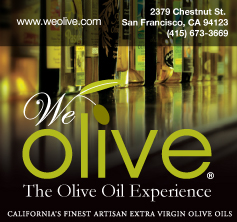Power yoga, flow yoga, hot yoga – what’s the difference? There are so many styles of yoga now that even experienced yoga practitioners can get confused.
WHERE IT ALL BEGAN: HATHA YOGA
Most yoga practiced today comes from Hindu philosophy, and was developed during the second to fifth centuries BCE during Indian antiquity as a system of contemplation with the goal of uniting the human spirit with the Supreme Being. The word yoga in Sanskrit means, “to yoke, or unite, join, or attach.” Someone who follows the practice of yoga and its philosophy is called a yogi (male) or yogini (female).
Yoga became popular in this country in the 1960s and even more popular in the 1980s when Dr. Dean Ornish linked practicing yoga to heart health. Today yoga is used as a mind-body technique to treat stress, anxiety, depression, insomnia, pain, fatigue, and other illnesses.
The western yoga practiced today is typically associated with hatha yoga, where a series of asanas or poses (for example, downward dog), are held in specific alignment with a focus on breathing, concentration, flexibility, and strength. During a hatha class you will stretch deeply and use every part of your body. A brief, relaxing mediation at the end of class is typical. Most yoga classes are 85–90 minutes long.
Some gyms, like the Presidio YMCA and the JCC, offer hatha flow classes, where breathing and movement are synchronized, and practitioners both hold and move through a series of poses. While not a true cardio workout, yoga flow classes offer more of a workout than a simple hatha class.
YOGA THAT CHALLENGES
For a class that really moves, try vinyasa or vinyasa flow yoga, another style of hatha yoga. Here the focus is on movement, linking each asana, or pose, to another and using the breath to create heat and build strength and stamina. (Other names for this style include bhakti, radiant, mellow flow, and viniyoga). Power yoga is even faster paced, with practitioners flowing from pose to pose quickly, focusing on sun salutations, a series of 12 sequenced poses with synchronized breathing.
Iyengar yoga has the same roots as hatha and vinyasa but is named for B. K. S. Iyengar, a yoga teacher who learned to teach in India and continues to practice today. Iyengar yoga is a slower-paced, methodical practice that emphasizes precision and alignment and uses props like blocks and bolsters. This style of yoga is excellent for someone new to yoga who wants to learn the basic asanas, or for someone recovering from an injury. Iyengar classes are taught at different levels to accommodate those with different levels of skill and ability.
YOGA THAT STEAMS
Bikram yoga, often called “hot yoga,” is based on a 90-minute, 26-pose sequence selected and developed by Bikram Choudhury, and is also based on hatha yoga. These 26 poses are designed to work every part of the body, and it is practiced in a room heated to 100–105 degrees. The reason for this is the belief that a warm body is more flexible and can be reshaped, and that Bikram yoga will flush out toxins and waste products from the body. First timers are warned to drink plenty of water before and after class, eat lightly beforehand, and dress in lightweight layers. Be prepared to sweat!
Other styles of yoga include anusara, which means, “to flow with grace,” and combines a spiritual element designed to open the heart while practicing asanas in the Universal Principles of Alignment developed by John Friend. Forrest yoga is based on the teachings of Ana Forrest and uses deep breathing and vigorous pose sequences to help sweat out toxins and build strength. Gentle or restorative yoga focuses on meditative poses using props to support the body, soothing the muscles and mind.
Deconstructing yoga








